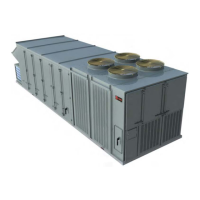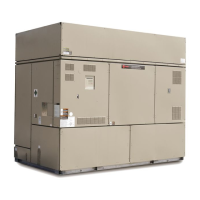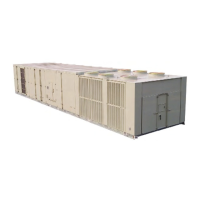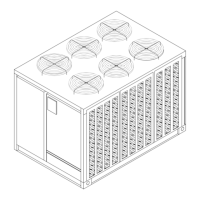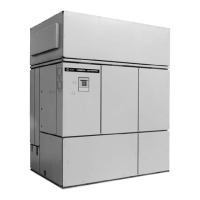81RT-PRC010-EN
Controls
(VAV/CV Units)
Human Interface Panel Main Menu
• STATUS — used to monitor all
temperatures, pressures, humidities,
setpoints, input and output status. The
• CUSTOM key allows the user to
customize a status report—consisting
of up to (4) screens of the data
available in the main Status menu.
• SET POINTS — used to edit all factory
preset Default setpoints
• DIAGNOSTICS — used to review active
and historical lists of diagnostic
conditions. A total of 49 different
diagnostics can be read at the Human
Interface Panel. The last 20 diagnostics
can be held in an active history buffer
log.
• SETUP — Control parameters, sensor
selections, setpoint source selections,
output definitions, and numerous
other points can be edited in this
menu. All points have factory preset
values so unnecessary editing is kept
to a minimum.
• CONFIGURATION — Preset with the
proper configuration for the unit as it
ships from the factory, this information
would be edited only if certain features
were physically added or deleted from
the unit. For example, if a field supplied
Trane Communication Interface (TCI)
module or Ventilation Override Module
was added to the unLitorder it in the
field, the unit configuration would need
to be edited to reflect that feature.
• SERVICE — used to selectively control
outputs (for compressors, fans,
damper position, etc.) for servicing or
troubleshooting the unit. This menu is
accessible only at the unit-mounted
Human Interface Panel.
5
Generic Building Automation System
Module (GBAS)
The Generic Building Automation
System Module (GBAS) is used to
provide broad control capabilities for
building automation systems other than
the Trane’s Tracer™ system. A field
provided potentiometer or a 0-5 vdc
signal can be applied to any of the inputs
of the GBAS to provide:
a
Analog Inputs — 4 Analog inputs that
can be configured to be any of the
following:
(1) Occupied Zone Cooling
(2) Unoccupied Zone Cooling
(3) Occupied Zone Heating
(4) Unoccupied Zone Heating
(5) SA Cooling Setpoint
(6) SA Heating Setpoint
(7) Space Static Pressure Setpoint
(8) SA Static Pressure Setpoint
b
Binary Outputs — each of the five (5)
relay outputs can be mapped to any/all
of the available diagnostics.
c
Demand Limiting Binary Input — This
function is operational on units with a
GBAS and is used to reduce electrical
consumption at peak load times. There
are two types of demand limiting, 50%
and 100%. When demand limiting is
needed, mechanical cooling and heating
operation are either partially (50%), or
completely disabled (100%), in order to
save energy. The definition of Demand
Limit is user definable at the Human
Interface Panel. Demand Limit binary
input accepts a field supplied switch or
contact closure. When the need for
demand limiting has been discontinued,
the unit’s cooling/heating functions will
again become fully enabled.
6
Evaporator Coil Frost Protection —
FROSTAT™
A temperature sensor on the evaporator
is used to determine if the coil is getting
close to a freezing condition. Mechanical
cooling capacity is shed as necessary to
prevent icing.
The FROSTAT™ system eliminates the
need for hot gas bypass and adds a
suction line surface temperature sensor
near the TXV bulb location to shut the
cooling off when coil frosting conditions
occur. The supply fans are not shut off
and will de-ice the coil. Timers prevent
the compressors from rapid cycling.
7
Occupied/Unoccupied Switching
a
Description — 3 ways to switch
Occupied/Unoccupied:
(1) NSB Panel
(2) Field-supplied contact closure
(hardwired binary input to RTM)
(3) TRACER
Night Setback Sensors
Trane’s night setback sensors are
programmable with a time clock function
that provides communication to the
rooftop unit through a 2-wire
communications link. The desired
transition times are programmed at the
night setback sensor and communicated
to the rooftop.
Night setback (unoccupied mode) is
operated through the time clock
provided in the sensors with night
setback. When the time clock switches to
night setback operation, the outdoor air
dampers close and heating/cooling can
be enabled or disabled depending on
set-up parameters. As the building load
changes, the night setback sensor
energizes the rooftop heating/cooling (if
enabled) function and the evaporator
fan. The rooftop unit will cycle through
the evening as heating/cooling (if
enabled) is required in the space. When
the time clock switches from night
setback to occupied mode, all heating/
cooling functions begin normal
operation.
When using the night setback options
with a VAV heating/cooling rooftop,
airflow must be maintained through the
rooftop unit. This can be accomplished
by electrically tying the VAV boxes to the
Unoccupied output relay contacts on the
Rooftop Module (RTM) or by using
changeover thermostats. Either of these
methods will assure adequate airflow
through the unit and satisfactory
temperature control of the building.
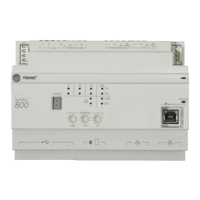
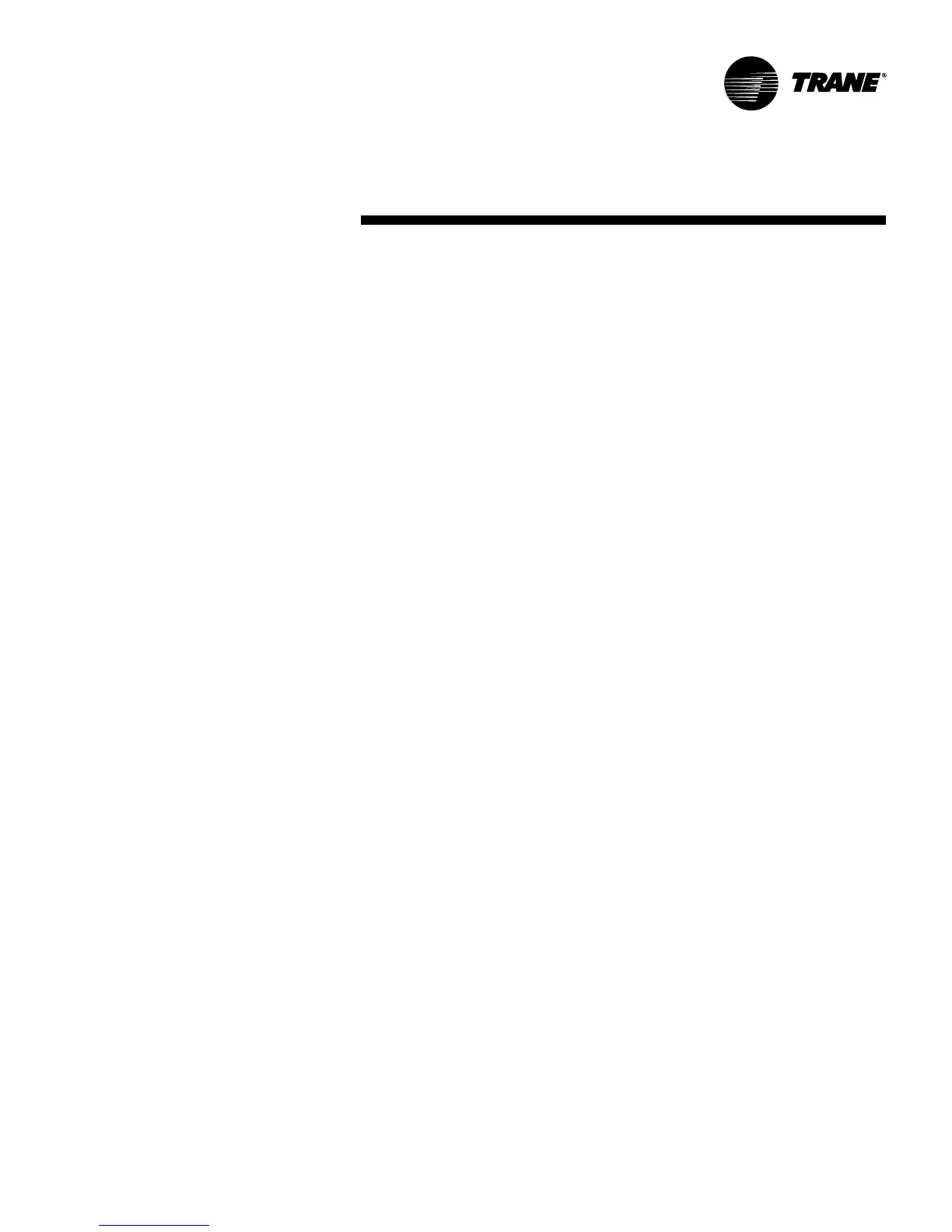